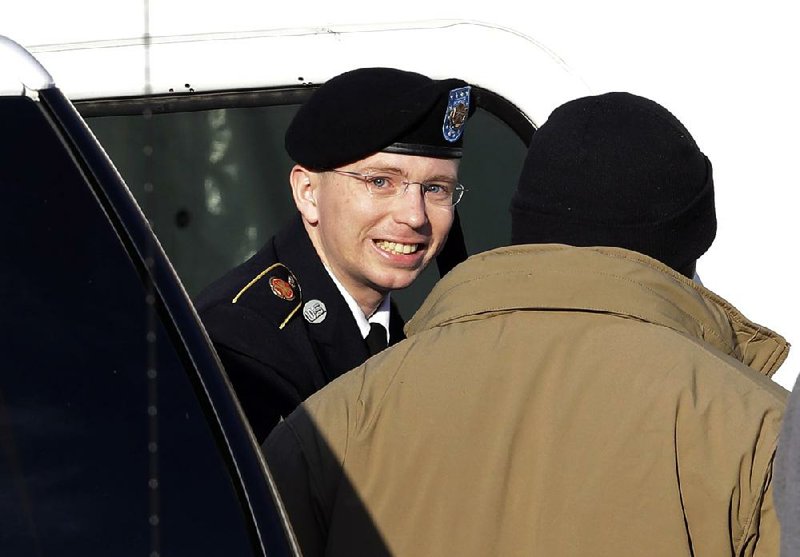FORT MEADE, Md. — An Army private accused of sending reams of classified U.S. documents to the secret-spilling website WikiLeaks was kept in tight pretrial confinement partly because another prisoner had recently committed suicide, the former security chief at the Quantico, Va., Marine Corps base testified Wednesday.
Marine Col. Robert Oltman appeared as a witness on the second day of a pretrial hearing for Pfc. Bradley Manning, who is seeking dismissal of all charges, claiming his confinement in the Quantico brig amounted to illegal punishment.
Oltman and others have testified that psychiatrists who examined Manning at Quantico repeatedly recommended that his conditions be eased. But Oltman, whose command included the brig, said he was skeptical about at least one of those recommendations because another detainee had killed himself in December 2009 after his custody status was reduced because of the advice of the same doctor, Navy Capt. William Hocter, the psychiatrist assigned to the brig.
“He didn’t have the strongest credibility with me with regards to his recommendations,” Oltman said under questioning by civilian defense attorney David Coombs.
Manning was held at Quantico for nine months, from July 2010 to April 2011, when he was moved to Fort Leavenworth, Kan. Throughout his time at Quantico, he was designated a “maximum custody” detainee and considered at risk of either suicide or harming himself or others. He was locked up alone for at least 23 hours a day, forced to sleep naked for several nights and required to stand naked at attention one morning, his lawyers assert.
At Fort Leavenworth, Manning was re-evaluated and given a medium-security classification.
Oltman said that he told Hocter in January 2011 that Manning would remain on “prevention of injury” status unless senior officers decided otherwise.
Oltman acknowledged that he told Hocter: “Nothing’s going to change. He won’t be able to hurt himself. He’s not going to be able to get away, and our way of ensuring this is that he will remain on this status indefinitely.”
On cross-examination by prosecutor Maj. Ashden Fein, Oltman said that neither he nor any senior officers ever made decisions regarding Manning’s custody classification. Those decisions were made by the officer in charge of the brig, Oltman said.
One of the security measures was the removal of Manning’s underwear at night, starting March 2, 2011, after he told a guard that if he wanted to kill himself, he could hang himself with the waistband. Coombs suggested Manning was commenting on the absurdity of his situation.
Coombs produced an email in which Quantico’s chief legal officer at the time, Lt. Col. Christopher Greer, made light of the underwear episode with a Dr. Seuss parody: “I can wear them in a box. I can wear them with a fox. I can wear them in the day. I can wear them so I say. But I can’t wear them at night. My comments gave the staff a fright,” Coombs read.
Oltman acknowledged that he responded to the e-mail with the signature, “Sam I am,” another Dr. Seuss reference.
“Was it funny to you that Pfc. Manning was being stripped at night,” Coombs asked?
“No, it was not, it was a very serious issue,” Oltman said.
At least a dozen supporters of the 24-year-old Army private attended the second day of what is expected to be a six-day hearing.
Manning faces possible life imprisonment if convicted of aiding the enemy, the most serious of the 22 charges that he faces.
He is accused of sending hundreds of thousands of classified Iraq and Afghanistan war logs and more than 250,000 diplomatic cables to WikiLeaks while he was working as an intelligence analyst in Baghdad in 2009 and 2010.
The materials Manning is suspected of leaking include sensitive reports on foreign governments and leaders and a 2007 video clip of a U.S. helicopter crew gunning down 11 men later found to have included a Reuters news photographer and his driver. The video garnered worldwide attention. The Pentagon concluded the troops acted appropriately during the attack, having mistaken the camera equipment for weapons.
Front Section, Pages 4 on 11/29/2012
